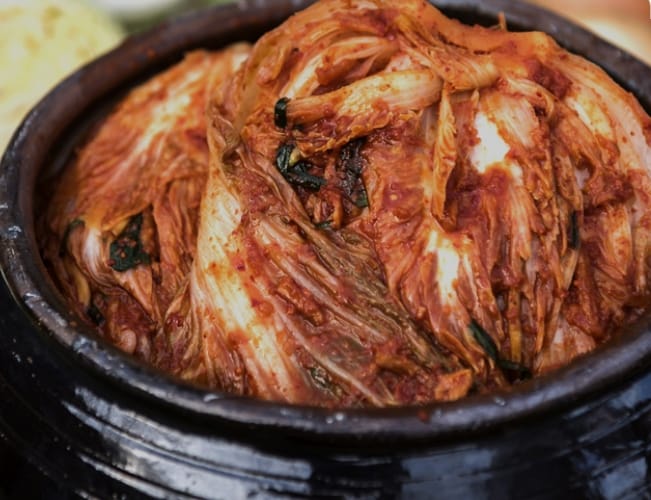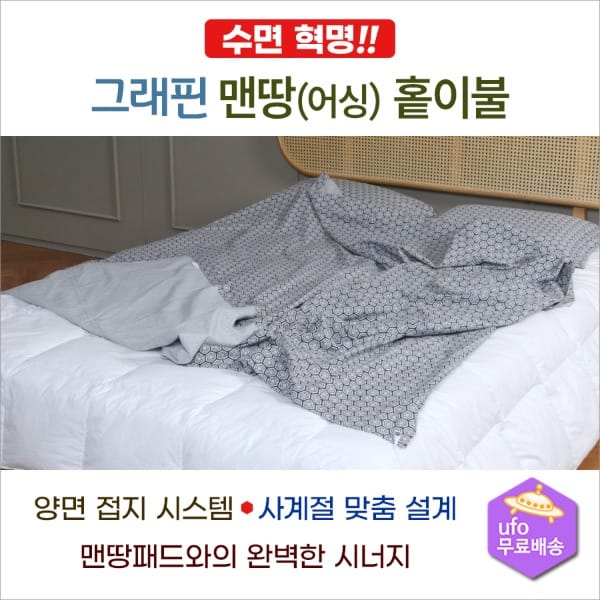The Truth About Kimchi Fermentation: Why Traditional Onggi Jars Beat Glass Containers

Introduction: Debunking the Glass Jar Myth
If you've been scrolling through Reddit lately, you've probably noticed a trend among fermentation enthusiasts: using glass jars to make kimchi. While it might look aesthetically pleasing on Instagram, this modern approach misses a crucial aspect of authentic Korean kimchi fermentation. As a Korean, I want to set the record straight about why traditional onggi earthenware crocks are absolutely essential for achieving proper, high-quality kimchi fermentation.
For thousands of years, Korean families have trusted one vessel above all others for fermenting kimchi: the onggi (옹기), a handmade earthenware crock that "breathes." This isn't just tradition for tradition's sake—it's backed by science, microbiological evidence, and centuries of culinary wisdom.

What is Onggi? The Art of Korean Earthenware Fermentation
Onggi is a traditional Korean earthenware vessel made from iron-rich clay and natural materials. Unlike modern glass jars or plastic containers, onggi is specifically designed with microscopic pores throughout its structure. These tiny holes are the secret to superior fermentation.

The Structure of Onggi: Designed for Breathing
When potters fire onggi in kilns at specific temperatures (typically 600-700°C), the process creates a unique porous structure. The vessel is then glazed with a mixture of wood ash and leaf mold before firing again. This intricate process, perfected over thousands of years, results in a container that is:
- Water-tight: The glaze prevents liquid from leaking out
- Breathable: Microscopic holes allow gas exchange while blocking contaminants
- Porous: The pore size (approximately 5 micrometers) acts as a natural filter
This is why Koreans call onggi a "breathing jar"—because it literally breathes.
The Historical Significance of Onggi in Korean Culture
Onggi isn't merely a practical vessel; it's a cornerstone of Korean culinary heritage. Historical records from the Goguryeo Kingdom (37 BC–AD 668) show onggi being used for fermentation. Archaeological evidence, including tomb murals from Anak Tomb No. 3, depicts onggi vessels being used for food preservation.
Traditionally, Korean families would gather their onggi jars in a designated outdoor area called jangdokdae (장독대)—a special terrace where multiple crocks were stored. During winter, these vessels would be buried in the ground to protect the fermenting food from freezing temperatures. This ancient practice wasn't just about survival; it was a sophisticated understanding of temperature control and fermentation science that predated modern refrigeration by centuries.
The Science Behind Onggi Fermentation vs. Glass Jars
Recent research from Georgia Institute of Technology has provided scientific validation for what Korean chefs have known for millennia. In a groundbreaking 2023 study published in the Journal of the Royal Society Interface, researchers Soohwan Kim and David Hu compared kimchi fermentation in onggi versus hermetically sealed glass jars.
The Carbon Dioxide Breakthrough
The study's findings were remarkable:
- Onggi produced 26% more beneficial lactic acid bacteria than glass jars over the same fermentation period
- Carbon dioxide levels in onggi were less than half compared to glass containers
- Gas permeability was more than double in onggi compared to glass
But why does this matter?
How Lactic Acid Bacteria Thrive in Onggi
During kimchi fermentation, lactic acid bacteria (Lactobacillus and Leuconostoc species) work to create the characteristic sour, umami-rich flavor. These beneficial microbes produce carbon dioxide as a byproduct of fermentation.
Here's the critical difference:
In a glass jar: Carbon dioxide accumulates inside the sealed container. As gas builds up, it creates a hostile environment that actually inhibits bacterial growth. The beneficial bacteria become suffocated by their own carbon dioxide production, limiting fermentation efficiency and the development of complex flavors.
In an onggi: The porous walls naturally release excess carbon dioxide gradually. This acts as a "safety valve," maintaining optimal conditions for lactic acid bacteria to proliferate. The bacteria don't get suffocated; instead, they thrive and reproduce more abundantly.
Dr. David Hu, the lead researcher, explained: "The porous structure of the onggi mimics the loose soil where lactic acid bacteria are naturally found. This helps ensure that food fermented in the vessel teems with the microbes."
The "Salt Flower" Phenomenon
One fascinating demonstration of onggi's permeability is the "salt flower" (jjang-kkot in Korean). When filled halfway with saltwater, salt crystals visibly form on the outer surface within just 8 hours. This visible proof of gas permeability has been recognized in Korean culture for centuries as a sign of excellent fermentation capability.
Nutritional and Flavor Advantages of Onggi Fermentation
Beyond the bacterial advantage, research has shown that kimchi fermented in onggi has superior nutritional profiles compared to kimchi made in glass, plastic, polypropylene, stainless steel, or other modern containers.
Studies have demonstrated that onggi fermentation produces:
- Higher levels of lactic acid bacteria (the probiotics everyone seeks)
- More complex flavor development with enhanced umami
- Better texture retention of the vegetables
- Improved digestibility due to more complete fermentation
This is why connoisseurs insist that homemade kimchi fermented in onggi tastes fundamentally different—and better—than commercially produced versions or home batches made in glass jars.
The Problem with Glass Jars: A Modern Misconception
Glass jars became popular for fermentation in Western countries because they're transparent, affordable, and durable. However, glass is fundamentally different from onggi:
Why Glass Falls Short
- Impermeable material: Glass cannot allow gases to escape naturally
- Traps carbon dioxide: The sealed environment creates a hostile bacterial environment
- Lacks beneficial microporosity: No natural exchange of gases and microbes
- No residual microbial community: Unlike onggi, glass doesn't retain beneficial bacteria on its surface for future ferments
When you use the same onggi repeatedly over years and decades, it becomes increasingly better for fermentation. The porous walls retain beneficial bacteria and enzymes from previous batches, accelerating and improving subsequent fermentations. Glass jars can never achieve this advantage.
How to Use and Care for Onggi
If you're convinced to invest in an onggi (and you should be!), here are essential care tips:
Cleaning Your Onggi
- Never use soap or detergent—these chemicals get trapped in the microscopic pores
- Wash with hot, warm, or cold water and scrub thoroughly
- Rinse multiple times and dry completely
- For stubborn smells, fill with hot water and let sit for 24 hours, then repeat
Proper Fermentation Techniques
- Fill your onggi with prepared kimchi
- Keep at room temperature for 5-7 days
- Move to refrigerator after initial fermentation
- Store in cool conditions (the colder, the slower the fermentation continues)
Seasonal Variations
Just as ancient Koreans buried onggi in winter, you can adjust fermentation based on temperature. Warmer environments speed fermentation (1-2 days), while cool conditions slow it down (10-14 days in refrigeration).
The Size Matters: Understanding Onggi Terminology
In Korean tradition, onggi are categorized by size:
- Danji (단지): Small jar
- Hangari (항아리): Medium-sized jar (the most common for household kimchi)
- Dok (독): Large jar for commercial or family-scale fermentation
Choose the size based on how much kimchi you plan to make. A medium hangari (3-5 liters) is perfect for most home fermenters.
The Artisanal Tradition Under Threat
There's an important caveat: authentic onggi are becoming increasingly rare. Traditional onggi makers (called onggijang) follow ancient methods that have been refined over generations. However, their numbers are declining, and the market has become flooded with inauthentic imitations.
When purchasing onggi, look for:
- Authentic Korean craftsmanship from regions like Jeju Island
- Natural clay and glaze materials
- Proper certification from Korean ceramic authorities
- Visible porosity and porous surface characteristics
Investing in a genuine onggi supports traditional artisans and ensures you're getting a vessel that will serve your family for generations.
Comparing Fermentation Vessels: A Complete Analysis
| Aspect | Onggi | Glass Jar | Plastic Container |
|---|---|---|---|
| Gas Permeability | Excellent (2x better than glass) | Poor | Poor |
| Lactobacillus Production | 26% higher | Baseline | Lower |
| Nutritional Quality | Superior | Good | Acceptable |
| Flavor Development | Complex, rich | Good | Good |
| Lifespan | Improves with age | Consistent | Degrades |
| Environmental Impact | Biodegradable | Non-renewable | Non-recyclable |
| Cost | Higher initial | Low | Low |
FAQ: Common Questions About Onggi and Kimchi Fermentation
Q: Can I ferment kimchi in a glass jar?
A: Yes, but it won't be optimal. Glass jars can produce acceptable kimchi, but you'll miss the superior bacterial proliferation and flavor complexity that onggi provides.
Q: How long does an onggi last?
A: Authentic onggi can last for decades or even centuries with proper care. Many Korean families use onggi passed down through generations.
Q: Is onggi expensive?
A: Initial investment is higher than glass (typically $50-$300 depending on size and authenticity), but the longevity and superior results justify the cost.
Q: Can I ferment other foods in onggi?
A: Absolutely! Onggi are traditionally used for gochujang (chili paste), doenjang (soybean paste), and ganjang (soy sauce). Each ferment improves the vessel.
Q: What if I can't find authentic onggi?
A: While not ideal, a sealed glass jar with a weight to keep vegetables submerged will still produce decent kimchi. However, you're missing out on the superior quality that onggi provides.
Conclusion: Return to Tradition
The trend of fermenting kimchi in glass jars represents a well-meaning but misguided departure from proven methods. The scientific research now confirms what Korean cooks have known for thousands of years: the vessel matters profoundly.
Onggi aren't just containers; they're sophisticated biotechnological innovations developed without modern chemistry or microbiology. The porous structure naturally optimizes conditions for lactic acid bacteria growth, producing kimchi with superior nutritional profiles, more complex flavors, and better digestibility.
If you're serious about making exceptional kimchi at home, investing in an authentic onggi is one of the best decisions you can make. You'll join a culinary tradition spanning millennia, support traditional Korean artisans, and experience kimchi fermentation as it was meant to be.
Your taste buds—and your gut microbiome—will thank you.
References and Further Reading
- Kim, S., & Hu, D. L. (2023). "Onggi's permeability to carbon dioxide accelerates kimchi fermentation." Journal of the Royal Society Interface, 20(202), 20230034.
- Georgia Institute of Technology. "Want Better Kimchi? Make It Like the Ancients Did."
- Jeong, J. K., et al. (2011). "Increased quality and functionality of kimchi when fermented in Korean earthenware (onggi)." International Journal of Food Science & Technology, 46(10), 2015-2021.
- Scientific American. "Science Shows Why Traditional Kimchi Making Works So Well."


